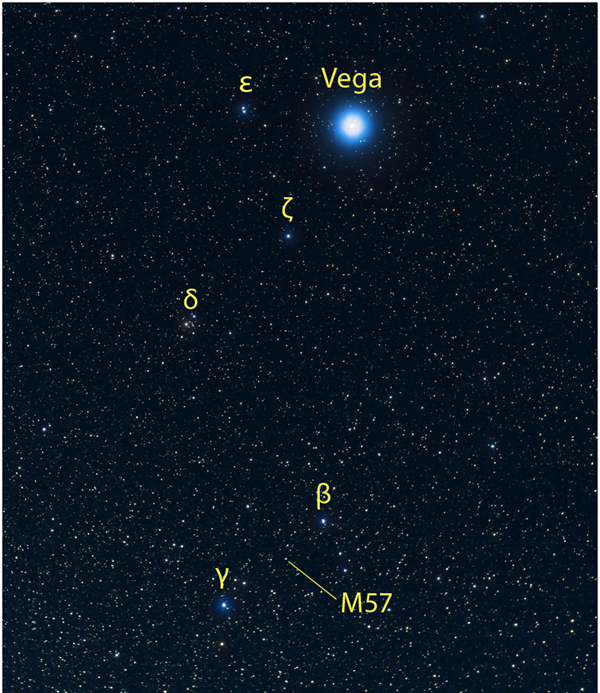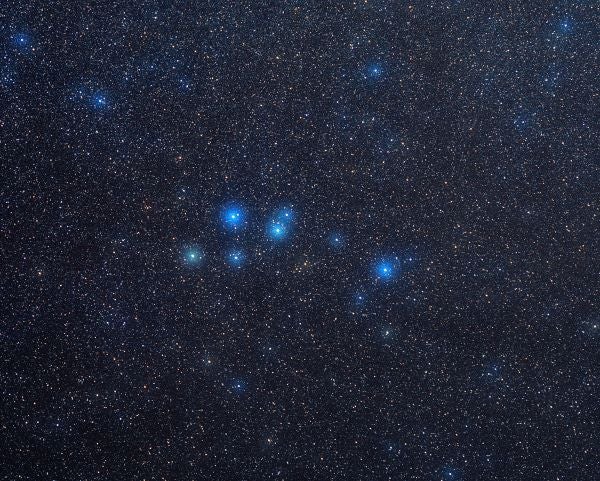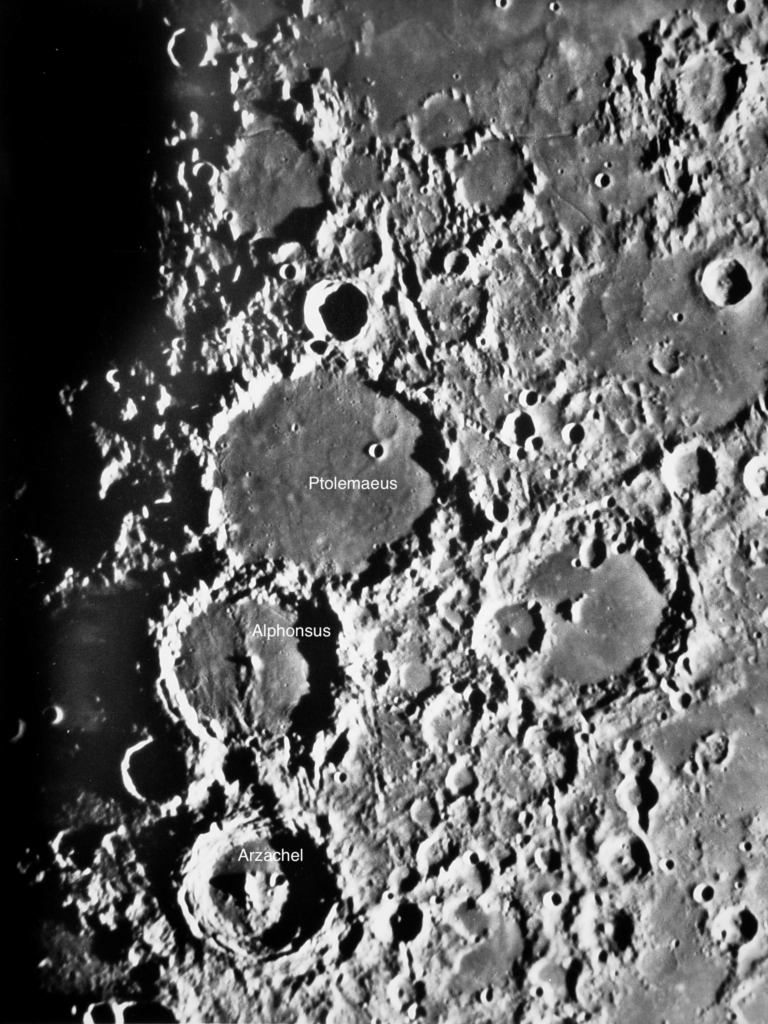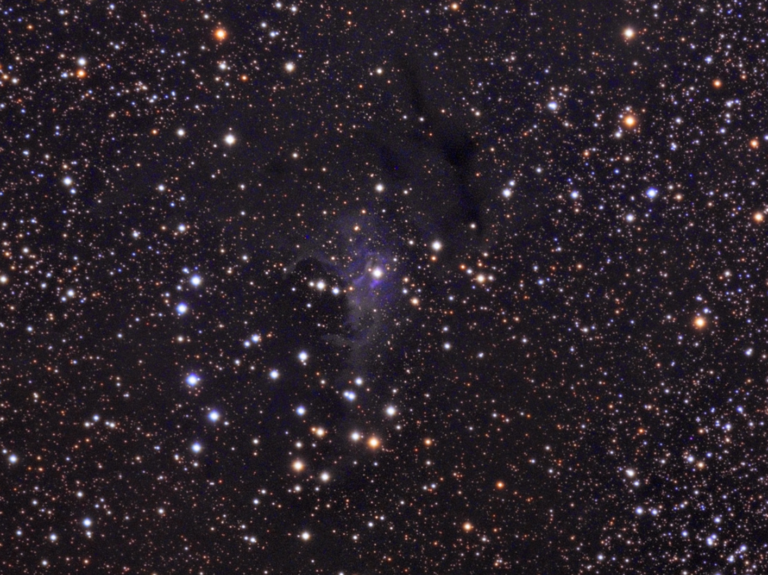The most important rule for any hobby, backyard astronomy included, is to have fun. That’s why when I find myself getting overly wrapped up in “serious” observing, I devote an entire evening to relaxed skygazing with my 2.4-inch f/12 refractor.
Last autumn, I did just this, touring the constellation Lyra the Harp with my modest scope. Though Lyra is typically associated with summer evenings, its position high overhead makes it awkward to observe with refracting telescopes at that time of year. The small constellation is still visible in October, though, comfortably positioned halfway up in the western sky after sunset.
During my fall tour of the Harp, I started with its brightest star, Vega (Alpha [α] Lyrae). At magnitude 0.03, it’s the fifth brightest star in the night sky. Through the eyepiece, Vega sparkled like a diamond, exhibiting its A0 spectral type. An optical double star, Vega has a 9.5-magnitude line-of-sight partner 83.7″ to its south. Normally, a pair this wide is easily split with a small scope. But Vega is some 6,000 times brighter than its companion, so even with high power, I couldn’t spot Vega’s partner.
The distinguishing feature of Lyra is a parallelogram formed by the stars Beta (β), Gamma (γ), Delta (δ), and Zeta (ζ) Lyrae. Beta and Zeta, the westernmost of the four, are both wide and easy doubles. Beta is a noted eclipsing binary that varies between magnitude 3.3 and 4.4 over a 13-day cycle, and its magnitude 6.7 partner sits a comfortable 45.7″ away. Zeta is similarly wide, consisting of magnitude 4.3 and 5.6 components separated by 43.7″. Both pairs were nicely split at 23x.
Up next was Epsilon (ε) Lyrae, the celebrated “Double-Double.” Low magnification revealed two stars, Epsilon1 and Epsilon2 Lyrae, of magnitudes 4.7 and 4.6, respectively. They were 210″ apart, a separation that can be breached by the unaided eye if you have keen vision, or by ordinary binoculars if you don’t. Each of these stars is in its own tight binary, too. Epsilon1 consists of magnitude 5.2 and 6.1 components separated by some 2.1″, while Epsilon2 is a pairing of near twins (magnitudes 5.3 and 5.4) separated by 2.3″. I needed 117x — which is about the maximum useful magnification for a 2.4-inch refractor — to split these close pairs.
Lyra also holds a second double-double, this one located some 7° southeast of Epsilon Lyrae. It’s comprised of two more double stars: Struve 2470 (magnitudes 7.0 and 8.4, separation 13.8″) and Struve 2474 (magnitudes 6.8 and 7.9, separation 16.0″). This pair of pairs will literally give you double vision; they are not only similar in magnitude and separation, but also in position angle, with both companions sitting roughly west of their primaries.
After exploring Lyra’s main multi-star systems, I returned to the parallelogram, focusing on the wide optical pair Delta1 and Delta2 Lyrae. These stellar gems are part of a loose open cluster named Stephenson 1. Consisting of a few dozen members, the group lies about 1,200 light-years away. Rob Datsko of Highlands Ranch, Colorado, notes that the cluster is home to a strikingly symmetrical triangle-within-a-triangle asterism. Delta2 (magnitude 4.2), Delta1 (magnitude 5.6), and HIP 92769 (magnitude 7.6) form a wide outer triangle encapsulating an inner, nearly equilateral triangle of 8th magnitude stars. Phil Harrington also mentioned this grouping in his September 2019 Binocular Universe column. Even at 70x, I found Datsko’s Double Triangle to be an eye-pleasing sight through my 2.4-inch scope.
Traveling twice as far into space (2,300 light-years), I next set my sight on Lyra’s most celebrated deep-sky object: the planetary nebula M57, also known as the Ring Nebula. Like most planetaries, it’s rather small (roughly 60″ by 90″) and faint (9th magnitude). Fortunately, M57 is located almost midway between Beta and Gamma Lyrae. Because the Ring Nebula appears nearly starlike at low magnification, I scanned the area with medium power until I came across an out-of-focus “star.” Upping the magnification to 70x, I was able to make out M57’s fuzzy oval. Years ago, I caught some backlash by stating the Ring is only visible with scopes of 6-inch aperture or larger. I’ve since seen it with smaller scopes, but not with my 2.4-inch. How about you?
Finally, I tracked down Lyra’s other Messier object: the often overlooked globular cluster M56. This object is frequently glossed over because it’s located in an out-of-the-way location, it’s relatively faint (magnitude 8.3), and it’s quite small (only the bright 3′-diameter central region is visible in small scopes). To find it, I aimed toward a spot roughly midway between Gamma Lyrae and Albireo (Beta Cygni), searching the area with the same technique I used to locate M57. Visually, M56 was unimpressive, but knowing that the puffball greeting my eye was actually a swarm of tens of thousands of stars some 33,000 light-years away heightened the “wow” factor.
Questions, comments, or suggestions? Email me at gchaple@hotmail.com. Next month: A tale of two Saturns. Clear skies!










